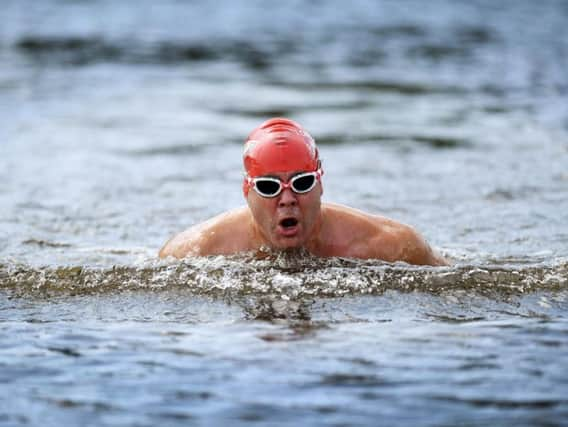Swimming the English Channel - what's involved?


Described as unique and demanding by the Channel Swimming Association, it is considered by many to be the "ultimate" long distance challenge.
Distance is a key factor, but also conditions with wind force up to six, and wave heights in excess of 2m.
Advertisement
Hide AdAdvertisement
Hide AdThe water is cold, as low as 14C which is half that of the average swimming pool, and swimmers are very likely to encounter jellyfish.
It is also one of the busiest shipping lanes in the world, with the CSA estimating 600 tankers pass through as well as 200 ferries and vessels going across daily.
It is approximately 21 miles across the Channel, but with tides and currents most swimmers are forced to follow an 's' shaped path, adding up to around 35 miles.
The fastest swim is a little over 7 hours and the slowest nearly 27 hours.
The certified challenge
Advertisement
Hide AdAdvertisement
Hide AdEach swimmer is given a 'swim window' which can be between a few dates. If the weather is good, they will get a turn within that time.
Swimmers set off with a claxon call, and are escorted by piloted boats.
All swimmers are asked to carry a passport, as they will be landing in France.
To complete the official Channel Swim, swimmers have to register with the CSA and book a recognised pilot.
Advertisement
Hide AdAdvertisement
Hide AdSolo swimmers must be over 16, and observers will be appointed to watch over the attempt.
The swim must be accomplished without assistance of any kind other than the provision of nourishment.
This means the strict rules even apply to the kind of swimming costume that can be worn - no thermal protection, no buoyancy aid and it should be sleeveless and legless.
Once the swim is completed, the CSA official observer sends a report, alongside the swim coordinates, for independent scrutiny by committee members before it can be ratified.
In 2006, David Walliams swam the English Channel for Sport Relief, in 10 hours and 34 minutes, raising over £1m in donations.